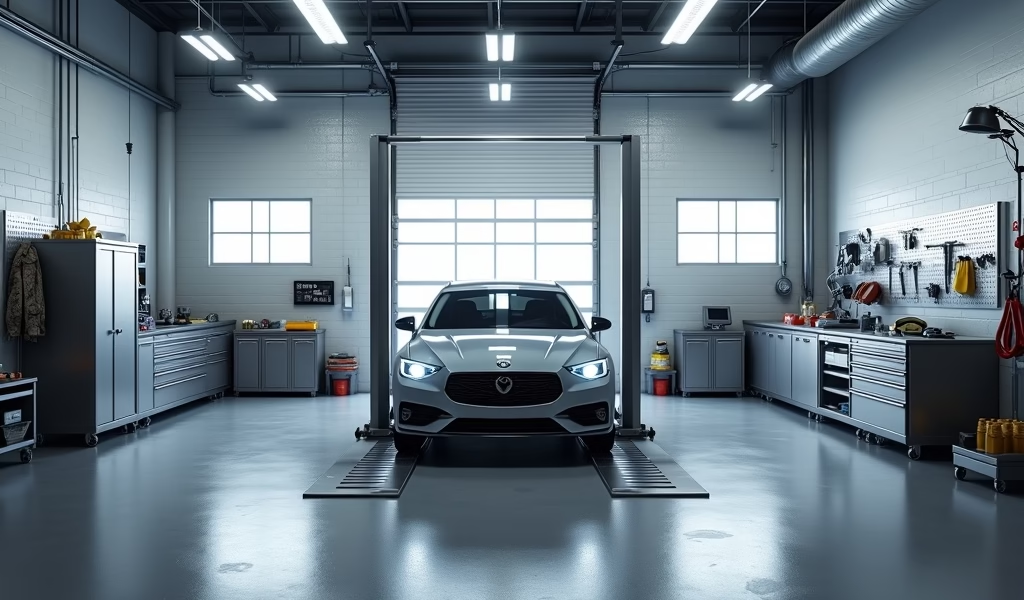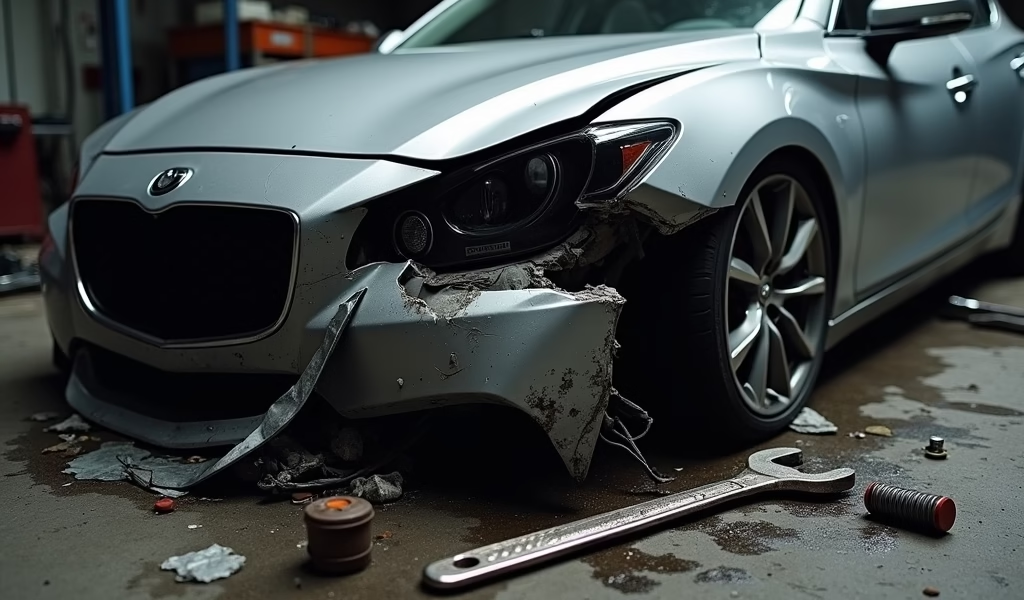Overview
This article provides detailed guidance for car owners following an accident, covering essential steps from safety protocols and choosing reputable repair shops to navigating insurance claims and knowing when to seek legal assistance. It emphasizes the importance of not overlooking critical repairs that affect vehicle safety and structural integrity, while offering advice on verifying repair quality to ensure proper restoration.
Table of Contents
- Understanding Post-Accident Repairs: What Every Car Owner Should Know
- Immediate Steps After a Car Accident: Safety First
- Choosing the Right Repair Shop: Making an Informed Decision
- Navigating Insurance Claims: Getting Fair Coverage
- When to Seek Legal Assistance: Protecting Your Rights
- 5 Essential Repairs After an Accident You Shouldn’t Ignore
- Post-Repair DIY Checks: Ensuring Quality Work
- Conclusion: Getting Back on the Road Safely
- Frequently Asked Questions
Understanding Post-Accident Repairs: What Every Car Owner Should Know
Being involved in a car accident is stressful enough without the added complexity of understanding repair requirements and potential legal implications. As someone who’s spent over two decades under the hood and guiding customers through the post-accident repair maze, I can tell you that knowing when to consult a lawyer accident car specialist can be just as important as knowing what repairs your vehicle needs.
Vehicle accidents, even minor ones, can cause damage that’s not immediately visible to the untrained eye. That slight fender bender might look superficial, but could be hiding frame damage or alignment issues that compromise your safety down the road. This is where the intersection of mechanical expertise and legal knowledge becomes crucial.
In this comprehensive guide, we’ll walk through the five essential repair considerations after an accident, when to involve a qualified car accident lawyer, and how to ensure your vehicle is properly restored to pre-accident condition. Whether you’re dealing with insurance companies or trying to determine if that estimate is fair, these insights will help you navigate the process with confidence.
Immediate Steps After a Car Accident: Safety First
When the unexpected happens and you find yourself in a car accident, your actions in the first few moments matter tremendously – both for your safety and for any potential claims down the road.
First things first: Check for injuries. Your well-being and that of your passengers should be your primary concern. Even if injuries seem minor, it’s worth getting checked by medical professionals, as some symptoms may appear hours or days later.
Next, if it’s safe to do so, move your vehicle out of traffic. Turn on hazard lights and set up warning triangles if you have them. This prevents secondary accidents and keeps everyone safer.
Documentation is crucial at this stage. Take detailed photos of:
- All vehicles involved from multiple angles
- License plates and vehicle identification numbers
- The accident scene, including road conditions and traffic signs
- Visible injuries or property damage
Exchange information with the other driver(s), including names, contact details, insurance information, and vehicle details. If there are witnesses, collect their contact information as well.
Report the accident to the police, especially if there are injuries or significant damage. A police report can be invaluable for insurance claims and potential legal proceedings.
Finally, notify your insurance company promptly, even if you believe you weren’t at fault. Delays in reporting can sometimes be used as grounds to deny claims according to insurance industry experts.

Choosing the Right Repair Shop: Making an Informed Decision
Selecting the right repair facility after an accident is perhaps one of the most crucial decisions you’ll make in the repair process. While your insurance company might suggest certain shops, remember that in most states, you have the legal right to choose where your vehicle is repaired.
Start by researching repair shops in your area with strong reputations. Look beyond the flashy websites and dig into customer reviews, particularly those that mention post-accident repairs. A shop might be excellent for routine maintenance but lack expertise in structural repairs.
Certifications matter tremendously in this field. Look for facilities with ASE-certified technicians (Automotive Service Excellence) and I-CAR (Inter-Industry Conference on Auto Collision Repair) credentials. These certifications indicate that technicians have undergone specific training for collision repair work.
Don’t hesitate to visit potential shops before committing. A quality collision repair facility should be clean, organized, and equipped with modern equipment. The staff should be willing to answer your questions clearly without rushing you through the consultation.
Ask pointed questions about their experience with your specific make and model. Some shops specialize in certain vehicle brands and may have more expertise with the particular construction methods and materials used in your car.
Warranty offerings are another important consideration. Reputable shops stand behind their work with solid warranties on both parts and labor. A shop offering a lifetime warranty on their repairs demonstrates confidence in their workmanship.
Finally, discuss the use of OEM (Original Equipment Manufacturer) versus aftermarket parts. While insurance companies often push for the less expensive aftermarket options, OEM parts are made to the exact specifications of your vehicle and may provide better fit, function, and safety. If consulting with a car accident lawyer about your case, they may advise on your rights regarding parts selection.
Navigating Insurance Claims: Getting Fair Coverage
The insurance claims process can feel like navigating a labyrinth, especially when you’re already dealing with the stress of an accident. Understanding how to work effectively with insurance companies can make a significant difference in the outcome of your repair experience.
Start by thoroughly reviewing your policy before filing a claim. Know your coverage limits, deductible amounts, and whether you have rental car coverage during repairs. This knowledge puts you in a stronger position when discussing your claim with adjusters.
When the insurance adjuster inspects your vehicle, be present if possible. Point out all areas of damage you’ve noticed and ask questions about anything that seems to be overlooked. Remember that some damage, particularly to underlying structures, may not be visible until the repair shop begins work.
Don’t accept the first estimate if it seems inadequate. Insurance companies initially offer what they believe is fair based on their assessment, but this may not cover all necessary repairs. If the estimate seems low, discuss this with your repair shop and ask them to communicate directly with the insurance company about any discrepancies.
Be wary of insurance companies that pressure you to use their “preferred” repair shops. While these facilities have relationships with the insurance company that may streamline the claims process, their primary loyalty may be to the insurer rather than to you. This could result in cost-cutting measures that compromise repair quality.
If you encounter resistance from your insurance company or believe they’re acting in bad faith, it may be time to consult with top-rated car accident lawyers who specialize in insurance disputes. They can help ensure you receive fair compensation for proper repairs.
Document every conversation with insurance representatives. Note the date, time, name of the person you spoke with, and what was discussed. This documentation can be invaluable if disputes arise later in the process.
When to Seek Legal Assistance: Protecting Your Rights
Not every fender bender requires legal representation, but knowing when to call a lawyer accident car specialist can save you significant headaches and financial strain. In my years advising customers on post-accident repairs, I’ve seen numerous situations where legal assistance made a crucial difference.
Consider consulting an attorney if you’ve suffered injuries in the accident. Even seemingly minor injuries can lead to ongoing medical issues and expenses that may not be immediately apparent. A skilled attorney can help ensure you receive compensation that covers both current and future medical needs.
Legal representation becomes particularly important when dealing with complex liability issues. If multiple vehicles were involved or if there’s disagreement about who caused the accident, an attorney can help gather evidence and build a case to protect your interests.
Watch for red flags in your insurance company’s handling of your claim. If your insurer is delaying processing, offering settlements far below repair costs, or denying claims without clear explanation, these may be signs of bad faith practices that warrant legal intervention.
When significant property damage is involved, especially if your vehicle has experienced structural damage or diminished value after repairs, an attorney can help ensure you receive fair compensation. According to NHTSA safety guidelines, improper repair of structural components can significantly compromise vehicle safety in future accidents.
The statute of limitations for filing claims after car accidents varies by state, typically ranging from one to three years. If you’re approaching this deadline, consulting with an attorney promptly becomes even more critical.
Remember that initial consultations with accident attorneys are typically free, making it a low-risk step to understand your options and rights before making any decisions about legal representation.

5 Essential Repairs After an Accident You Shouldn’t Ignore
When your vehicle has been in an accident, certain repairs simply can’t be postponed or overlooked without risking your safety or causing more extensive damage down the road. From my experience in the repair shop, here are the five critical repair areas you should never compromise on:
1. Frame and Structural Integrity
Your vehicle’s frame is its skeleton, designed to absorb impact energy and protect occupants. Even seemingly minor accidents can cause frame damage that compromises this critical safety system. Modern unibody construction means that precise measurements and specialized equipment are necessary to restore proper structural integrity.
Signs of frame damage include doors that no longer close properly, unusual tire wear, and a car that “pulls” to one side when driving straight. Never accept shortcuts in frame repair – proper straightening and measuring is essential for your safety in any future accidents.
2. Alignment and Suspension Components
The impact from an accident frequently throws off wheel alignment and damages suspension components. These issues might not be immediately obvious but can lead to premature tire wear, poor handling, and compromised braking performance.
Insist on a thorough inspection of all suspension components – control arms, struts, bushings, and steering components – after an accident. These parts work together as a system, and damage to one component often affects others. Complete alignment should be performed after repairs are finished.
3. Airbag Systems and Safety Restraints
If airbags deployed during your accident, proper replacement is non-negotiable. This includes not just the airbag itself but the entire system – sensors, control modules, and wiring. Airbag systems are complex and require precise calibration to function correctly in future impacts.
Even if airbags didn’t deploy, the sensors and pretensioners in seat belts might have been activated or damaged. These components should be inspected and replaced as needed to ensure they’ll protect you in future accidents.
4. Hidden Damage Behind Body Panels
What looks like a simple dent can conceal significant damage to systems behind the visible body panels. Modern vehicles have complex networks of wiring, sensors, and safety equipment tucked behind these panels.
Insist on thorough inspection of components behind damaged areas – cooling systems near front-end damage, fuel systems in rear-end collisions, and side-impact protection systems in side collisions. Overlooking this hidden damage can lead to system failures long after repairs are completed.
5. Proper Paint and Corrosion Protection
While it might seem cosmetic, proper paint restoration is actually a functional repair that protects your vehicle from corrosion. Modern automotive finishes are complex systems designed to protect the metal underneath.
Quality repair facilities will match your vehicle’s factory paint precisely, apply the correct number of layers (primer, base coat, clear coat), and ensure proper curing. They’ll also restore factory corrosion protection measures like cavity wax and seam sealers that prevent rust from developing years after the repair.
Cutting corners on any of these essential repairs can lead to safety concerns, accelerated wear of components, and diminished vehicle value. If your insurance settlement doesn’t adequately cover these critical repairs, it may be time to consult with a lawyer accident car specialist to ensure proper compensation.
Post-Repair DIY Checks: Ensuring Quality Work
Even after your vehicle returns from the repair shop looking good as new, it’s wise to perform some basic checks yourself to ensure the work was completed properly. These simple inspections can help catch issues before they become problems down the road.
Start with a thorough visual inspection in good lighting. The repaired areas should match the rest of the vehicle in color and finish. Look closely at panel gaps – the spaces between body panels like doors, hood, and fenders – which should be even and consistent with unrepaired areas of the vehicle.
Pay attention to how the vehicle handles during a test drive. It should track straight without pulling to either side when you momentarily release the steering wheel on a level road (always keeping hands close to the wheel for safety). Braking should be smooth and even without pulling or vibration.
Listen carefully for unusual noises that weren’t present before the accident. New squeaks, rattles, or wind noise could indicate incomplete repairs or components that weren’t properly secured during reassembly.
Check all electronic functions thoroughly. Modern vehicles have numerous electronic systems that can be affected by accidents and repairs. Test all lights, power windows, locks, climate control, entertainment system, and driver assistance features to ensure they work correctly.
Monitor your vehicle’s fluids and mechanical systems for the first few weeks after repairs. Check for fluid leaks in your parking space, monitor temperature gauges for normal operation, and be alert for warning lights on your dashboard.
If you notice any concerning issues during these checks, document them with photos or videos and contact your repair shop immediately. Reputable facilities stand behind their work and will address legitimate concerns promptly. According to Consumer Reports’ recommendations, never hesitate to raise concerns about repair quality – your safety and vehicle longevity are at stake.
Conclusion: Getting Back on the Road Safely
Navigating the aftermath of a car accident involves more than just getting your vehicle repaired – it requires understanding the complex interplay between proper repairs, insurance coverage, and sometimes legal assistance. As we’ve explored throughout this guide, the decisions you make during this process can have long-lasting implications for both your vehicle’s condition and your personal safety.
Remember that quality repairs aren’t just about aesthetics; they’re about restoring your vehicle’s safety systems and structural integrity to protect you in any future incidents. Don’t settle for substandard work or inadequate insurance settlements that compromise these critical aspects of repair.
When facing resistance from insurance companies or dealing with significant injuries and damages, don’t hesitate to consult with qualified legal professionals. A lawyer accident car specialist can be your advocate, ensuring your rights are protected throughout the claims and repair process.
By following the guidance outlined in this article – from immediate post-accident steps through final quality checks – you’ll be better equipped to handle the challenges that come with vehicle accidents and repairs. The road to recovery might seem daunting at first, but with the right knowledge and resources, you can emerge from the experience with a properly restored vehicle and the peace of mind that comes with it.
Drive safely, stay vigilant, and remember that proper preparation and knowledge are your best protection both before and after accidents occur.
Frequently Asked Questions
When should I contact a lawyer after a car accident?
Contact a lawyer immediately if you’ve sustained injuries, if fault is disputed, or if your insurance claim is denied or undervalued. Early legal consultation often leads to better outcomes, especially with complex cases.
Can I choose my own repair shop after an accident?
Yes, in most states you have the legal right to choose your own repair facility regardless of what your insurance company suggests. This right is protected by consumer choice laws in the automotive repair industry.
How long should proper car repairs take after an accident?
Repair timelines vary based on damage severity, parts availability, and shop capacity, typically ranging from a few days for minor damage to several weeks for major structural repairs. A reputable shop should provide a realistic timeline before beginning work.
Will my insurance rates increase after an accident repair claim?
Insurance rates often increase following an accident claim, particularly if you were at fault. The amount of increase depends on your previous driving record, insurance company policies, and the cost of the claim.
What is diminished value and can I claim it after repairs?
Diminished value is the reduction in your vehicle’s market worth after being repaired following an accident. Many states allow claims for this loss in value, but the process varies by jurisdiction and often requires professional documentation.

